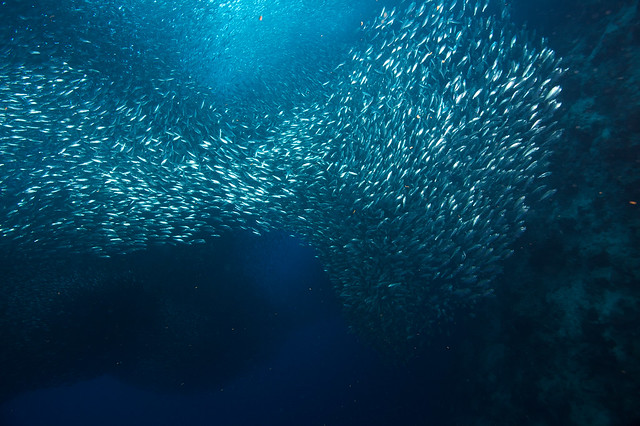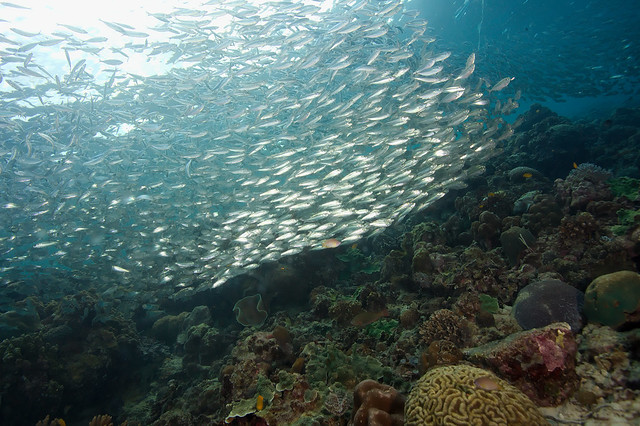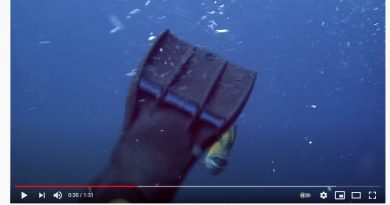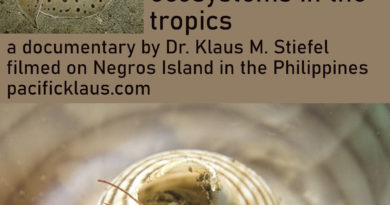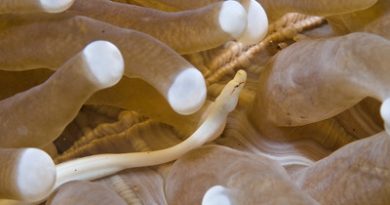Marine Biology in the News: Sardine Run
I came across a really interesting paper which deserves further attention, also by folks who are not professional scientists. The study investigates the great sardine run of South Africa. I haven’t been there, but I have spent a few months in Moalboal on Cebu in the Philippines, where there is a massive schools of sardines – stationary, not migrating – residing just off the drop off. The Moalboal sardines are sometimes falsely called a “sardine run” as well. The sardine images and the video in this post are from Moalboal; this already is an amazing spectacle, even though it doesn’t approach the South African sardine run. The sardines in Africa move to their new location during most years and are then devoured by a collection of predators, from whales, sharks, bony fishes and seabirds. It’s a spectacle which enthralls ocean naturalists, with or without cameras.
This is the study (link to the full text paper):
The authors write that ” In terms of spectacle and the sheer magnitude of the event, the sardine run is comparable to East Africa’s great wildebeest migration”.
Sardines in Molaboal
What Did They Find Out?
The great sardine run of South Africa is a mass migration of the Pacific sardine, Sardinops sagax mainly lives around the temperate southern tip of Africa. These sardines live there in several sub-populations. The sub-populations have different water temperature preferences, and annual spawning patterns. There is a Namibian population and there are two South African populations, one in the Atlantic (a colder water population) and one in the Indian ocean. The dividing line is at Cape Agulhas.
Fish from these sub-populations move north, up the African east coast, to sub-tropical spots. Why? Occasionally there are colder water pockets up north, resulting from upwellings, which fit the temperature preferences of these sardines, and are typically very nutrient rich and productive. The question Teske and colleagues asked now is: Where are the sardine-run-sardines from? Are their ancestors from the Atlantic or Indian ocean populations? For this purpose, they sequenced the sardines’ DNA, mainly comparing single-nucleotide polymorphisms, individual “letters” in the DNA which vary between the populations.
It turns out that most of the sardines participating in the great South African sardine run came from the cool-temperate water Atlantic population of sardines.
Prokofiev fits with Sardines
And, So?
But why would these sardines from the population used to the colder Atlantic go on a migration to sub-tropical waters?
Only a part of the colder-water loving Atlantic sardines move up north, and they only do so when there are cold upwellings, fitting their temperature preferences. This seems to be the course of events:
- The water on the African east coast cools during the winter, making the conditions fitting for the cold-water Atlantic coast sardines. This cooling depends on a number of factors, such as ocean currents and winds. Hence, the cooling, and the sardine run, does not happen every year, or at the same time every year.
- Atlantic population sardines migrate up north along the east coast, in now cooler water.
- The conditions at sub-tropical latitudes are nice for them due to the rich, cold upwellings, and the sardines feed.
- The conditions relatively suddenly change. The water becomes too warm for them, there is not enough food anymore, they physically degrade and become lunch for the many predators which converge onto the area.
- This is an “ecological trap”. The sardines made a navigation error, following conditions which are fitting for them initially, but which suddenly changed towards too hot, too nutrient-poor. There is no way for the fish to predict these changes in advance. They are too weak and under too much pressure to get back.
Why does this persist, why is this behavior not selected against? Only a part of the Atlantic sardine population migrates, less than 10%, and the losses are not enough to affect this population and to evolutionarily tweak the fish behavior against undertaking this (or any) migration. Also, some of the sardines up north survive long enough to spawn. Generally, the sardines are following an engrained migration drive which is adaptive in most situations, with no way for them to predict that in this case it will lead them into a death trap. This is an evolutionary/behavioral trap as well, in some sense.
Really insightful, what an interesting paper!
And, these days, it is necessary to think how the ongoing climate change will likely influence the sardine run. Sea surface temperatures are rising, making it less likely that cold water conditions occur:
Teske and colleagues write: “Given the colder water origins of sardines participating in the run, the projected warming could lead to the cessation of the sardine run in the next few decades”. But again, since only a small part of the sardines from South Africa migrate on this run, it would be a real shame for underwater naturalists, but not a death sentence for the sardine populations.
More Moalboal Sardines
